As a child, I was taught to be careful who I listened to. Keeping in mind who we listen to is extremely important, so I feel the need to gain some credibility with you by mentioning some of our gym’s past TSC successes.
The TNT Track Record
TNT has been known to compete at a high level in the Tactical Strength Challenge, and we generally produce a large number of competitors. Names to note, among many others, are:
- Tim Corbett, Open champion and Elite Division runner-up. Tim improved his deadlift from 425 to 505 at age 44, and at the most recent TSC in April 2014, he scored 480lbs in the deadlift, 29 pull-ups, and 145 snatches in the Open Division, but he did not submit his score.
- David Dallapiazza repeatedly performs 24-30+ pull-ups at age 44.
- Melissa Schmidt came to us as an overweight 39-year-old mom, and is now age 42 and deadlifts 335lbs, performs 7-12 pull-ups at a bodyweight of 170lbs, and is virtually untouchable in the snatching event.
- Andrew Kuechler is in his early twenties and has already been an Open Division Champion.
- Cori Berg most recently won the Women’s Open division. She trains with SFG instructor Steven Knuth who began and is still mentored with his kettlebell training at TNT.
- Finally, Mary Dickerson, two-time Novice division champion, performed 20 strict pull-ups, then persuaded me to videotape her performing another 20 strict pull-ups at a TSC six months later so people would believe she did them all under the competition rules (her previous max before following our system was 6 repetitions).
- Personally, I have won many Open and Elite Division titles over the years and my deadlift has gone from 495 to 575, including the feat of a 400lb one-hand deadlift (I competed with one arm due to surgery on a pectoral rupture). My snatches have gone from struggling to get 70 in a row using both hands to performing over 110 with one hand—no set down, and a best of 164 in five minutes, which was judged by SFG II Ryan Toshner. Recently, you have seen less of a performance from me, however my training is getting back on track, and I am excited to have competed well at the April 2014 TSC.
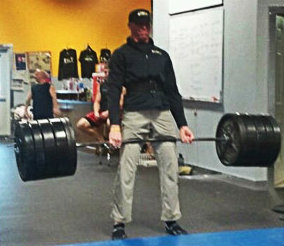
I was also taught to lead by example, so I hope the information mentioned above doesn’t come across in a boastful way, but simply convinces you that we have a training system at TNT that produces outstanding TSC numbers. Clearly, I cannot be with you in the gym watching and motivating you, but I would thoroughly enjoy hearing the results from anyone willing to follow the TNT TSC program.
Training the Snatch
I will start by telling you that we mostly snatch. It surprises me when I attend kettlebell workshops and hear negativity about snatching. For some, it is a grueling event that is dreaded at the end of each TSC. For a TNT member, snatching is the equivalent of doing a sprint workout or going for a long jog. For us, it is fun, and we look forward to various types of snatch workouts.
With that said, the first step is to get your head in the right spot. Getting mentally “geeked up” to snatch will produce much better results. Know your workout in advance (don’t just show up and decide to do a snatch workout), and let a friend know you’re doing it, so you can be held accountable for its completion.
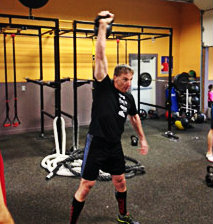
Second, be sure to stretch! Much of the negativity I hear about snatching during kettlebell workshops is in regard to high volume snatching producing poor shoulder and thoracic mobility. This can be true. My own posture had taken a downturn until I began corrective drills in proportion to the amount I was snatching. I suggest the FMS wall-sit exercise with a broom handle along with bridges and thoracic bridges, the Bretzel, or any other form of shoulder and thoracic mobility/stability exercises you’ve found useful. I also feel overhead carries, squats, windmills, and bent presses can help to stabilize better posture and mobility while training with high volume snatching.
Training the Pull-up
Again, I would like to suggest that lots of snatching is the largest reason why we perform well for the TSC. Our pull-ups actually get worse when we practice them with high repetitions, so we don’t practice that way. I, along with our members, have noted that when we ignore pull-ups and perform lots of snatches leading up to the TSC, our max number of pull-ups increases. In the past, we have tried to focus on pull-ups in training and we have gotten worse at them, so we’ve trashed that idea all together.
Test it for yourself. I encourage you to perform thirty minutes of snatching sometime. Grab a large bell (two to four sizes bigger than competition size) and snatch it five times each hand every minute on the minute (EMOTM) for up to thirty minutes. When you are done, you will feel your grip, biceps, lats, and core will be well trained, and trust me when I say your pull-ups will be significantly better after continuing this type of workout on a weekly basis.
Snatching also seems to shred body fat, and one of the best ways (I’ve found as a rock climber) to increase pull-ups is to lose excess weight. At 205-210lbs, I can perform about 22-26 pull-ups, but at 195-200, I can perform 27-31 pull-ups. The TNT way is to snatch to lose weight and gain strength in repetitive pull-ups—just remember you cannot increase the amount you eat with this style of training, if your goal is to lean out.
We do work on pull-ups throughout the year, though. We just don’t perform them in the six weeks leading up to the TSC. This may be slightly off topic in discussing the TSC, but as Pavel teaches, get strong first and your endurance will also increase as a result. If a man can deadlift 600lbs, then how easy is it for him to deadlift 300lbs for 20 reps? Easy, right—it’s only 50% of his maximal effort! The same applies for pull-ups.
To gain strength in a maximal weighted pull-up, I recommend performing bent presses often. During a near maximal effort bent press, your lat will be extremely engaged, and as a result your pulling muscles will be strengthened. At TNT, we wouldn’t perform more than 6 reps in a session, 1 rep at a time for a total of 3 on the left and 3 on the right. We normally pair these up with heavy swings and carries in between reps. Use the Easy Strength or 80% rule with your bent presses. Perform the 6 reps at least once each month, and on weeks you do not do that kind of volume, at least perform 1 rep at about 80-85% maximal effort for fun after a great warm-up or as a demonstration at least 2 times each week. So that’s 1 rep each side at 80-85% maximal effort two times in a week in which you do not perform them during a workout with a volume of 3 reps each side. After about a year of this, your body will adapt and without practicing heavy pull-ups more than once every three months, your pull-up maximal strength will improve significantly.

Training the Deadlift
Proper snatching will also increase deadlift ability. Haven’t we been taught that grip strength and total body strength are correlated? Pavel’s soap up your hands and swing mentality might not be that far off. At TNT, we duct tape our hands. This provides a little callous protection as well as challenges the grip due to a slippery surface. Just be sure to never snatch directly at anyone, or use this technique at a kettlebell workshop. This technique also teaches you how to avoid rolling the bell over your callouses. Also, as stated earlier, high volume snatches train our core and our lats, two muscles clearly needed to deadlift big.
Finally, when training regular snatches versus speed snatches, we focus on a deep hinge, putting us into our traditional deadlift stance. Mary Dickerson is the only one at our gym who performs sumo-style deadlifts. She has been a distance runner for many years, is 47 years old, 105lbs, and deadlifts 225lbs.
When it comes to the deadlift, snatching is not all we use to improve. We perform varied amounts of accelerated eccentric swings and singles or doubles of heavy swings or dead-swings. We deadlift something heavy three or four times a year (similar to how often we do weighted pull-ups), and although not everyone takes my advice, we usually open up this type of practice at our personal record from the previous quarter. We do perform a warm-up with varied amounts of swings and snatches before this deadlift workout. But our mentality is that we’ve already lifted this weight once, and if we hit it on our first lift at a PR tie, then we get two chances at a new PR. If after the second attempt we hit a new PR, then we usually decide whether it is worth a third attempt or not. If a member lacks confidence in pulling their PR for their first attempt, we will start no lower than 15lbs under their PR. We like to bump up in 15lb increments.
We suggest to our members if they won’t at least fight to get the weight to their knee caps, then don’t even bother to attempt it. We feel a failure once in a while allows our body to feel the load of a new weight and has a neural impact on your ability to lift it in the next quarter of the year. However, defeat should only happen once to twice per year, and my recommendation is to not try anything you don’t believe you can get, and never give up pulling until you at least get the weight to the bottom your knee caps—this is very important. Obviously injuries or lack of training can change the philosophy I just described.
NOTE: Our gym isn’t a powerlifting gym, so of course we have not coached anyone to an extremely high deadlift. We have, however, increased strength in the general population while at the same time producing an athlete that can perform high volumes of pull-ups and snatches for the TSC. If you’re a powerlifter, don’t take offense to our training style, we’re not out to deadlift 1,000lbs, we’re out to win the TSC.
Besides snatching, we work heavily on core pressure types of abdominal exercises. Our heavy core training is usually done twice each week, and includes power wheel roll outs, body saws on suspension trainers, dragon flags, and inch worm walk outs.
12-Week TNT TSC Training Program
Here is a general twelve-week progression we use, which may change based on previous experience, strength, or injury:
In weeks 1-5, snatch 2x per week in form of 5L/5R EMOTM with a test size bell for the amount of time listed below:
- Week 1—Session 1: 10-min ; Session 2: 12-min
- Week 2—10-min ; 14-min
- Week 3—10-min ; 16-min
- Week 4—10-min ; 18-min
- Week 5—10-min ; 20-min
During these 5-weeks, add heavy repetitive swings once each week for multiple sets of up to 12 reps, but usually 2-5 reps.
- Week 6—
- Session 1: 10L/10R EMOTM with test size bell for as many minutes as you can with proper technique (10 minutes is good)
- Session 2: Go two bell sizes lighter than what you used for session 1 (Open Division men 16kg and women 10kg) for as many as possible, no set downs, with good form, in form of 10L/10R/10L/10R, etc, etc. Try to build up to 30-min or 1,000 reps over the course of a couple years of following this program.
- Week 7-10—Go back to weeks 2-5 workouts except use a bell two sizes larger than competition bell (Open Division men 32kg and women 20/22kg)
- Week 8 and Week 10—Add a third day of snatching with test size bell. Perform 100-200 reps as fast as possible, again with good form (we usually don’t set the bell down)
- Week 7 and 9—Add a third day of snatching a light bell just to loosen up. Go for length of time (80% rule) and think of it as a long easy jog
- Week 11—
- Session 1: Use the 2 bell sizes up and go 10/10 EMOTM for time (making it 7 minutes is great, but use the 80% rule).
- Session 2: Use the bell 2 sizes down and perform 16L/16R for speed (try to get all 32 reps in 1 minute) perform this for no more than 10 minutes. 6-7 minutes usually suffices.
- NOTE: Geoff Neupert taught me to point my thumb forward instead of backward at the bottom of a snatch. I’ve noticed this has increased my ability to snatch faster by 2 reps per minute.
- Session 3: Perform accelerated eccentric swings for 4 sets of 8 followed by 3 sets of 5 heavy swings, immediately followed by 2 more sets of 8 accelerated eccentric swings. Concentrate on standing faster out of the hinge during the two later sets than during the first 4 sets. Use appropriate rest i.e. a good recovery so you can feel powerful, usually 3-4 minutes.
- Week 12—Repeat the accelerated eccentric swing day from week 11. Perform a second day of accelerated eccentric swings with the same set/rep scheme, and change the heavy swing to 1 dead swing and 2 repetitive swings for 3 sets. Again, follow this up with another 2 sets of accelerated eccentric swings working on the speed at which you stand up out of your hinge. NOTE: The heavy bell needs to be an absolute minimum of 2 sizes larger than your accelerated eccentric bell. For example, I use a 32kg bell for accelerated eccentrics and the Beast or double 32kg for heavy swings. Melissa uses a 20kg for accelerated eccentric swings and 36kg or 40kg for heavy swings. I wouldn’t snatch at all during week 12.
The Results After 12 Weeks of TNT TSC Training
After the twelve weeks of training, deadlift something heavy as directed earlier in this article, increasing by 15lb increments, and attempting to start at your PR or just 15lbs under your PR. Use snatches and swings to warm-up for your deadlift instead of smoking yourself with deadlifting to warm-up.
If you already have a monster deadlift, but lack in the pull-up or snatch department, this program will improve those areas. If you’re awesome at pull-ups, you will find this program increases your deadlift and snatching abilities.
For further insight into our training, or to get a copy of a training program that has taught people to achieve a bodyweight get-up (women 50% body weight), contact us at info@tntfr.com or visit one of our six locations in Wisconsin. Good luck!
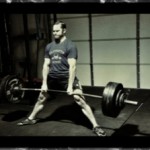

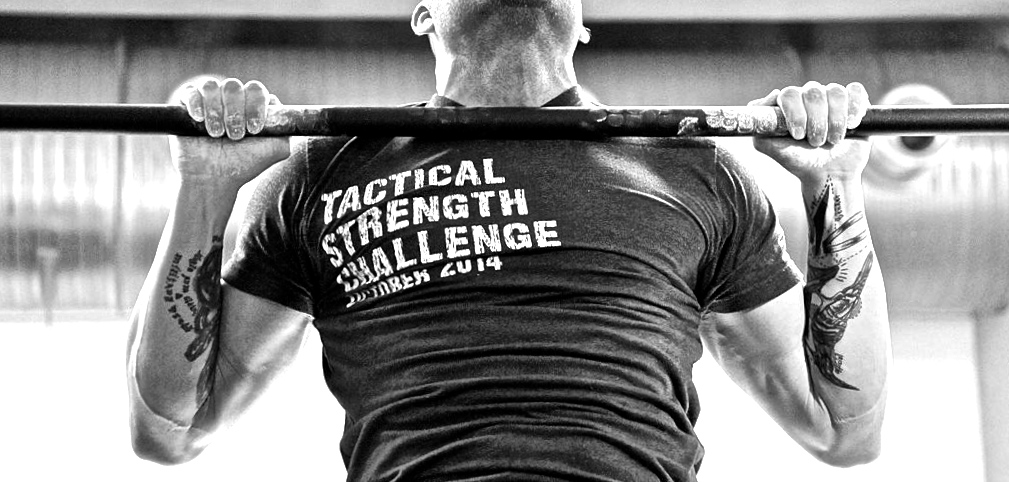
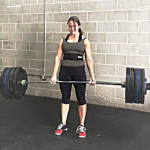




“My own posture had taken a downturn until I began corrective drills in proportion to the amount I was snatching.”
The snatch has done exactly the opposite for me. The snatch has tremendously improved my posture. I guess it has strengthed the back so that I lost my slumped forward posture.
Derek,
Thank you for both the content and the way you shared it.
You are self aware of your own capabilities and those of your brothers/sisters in iron because you measure results consistently. Those results are not a boast, they are the result of your intelligently “paying the price”.
Agree with you totally – the more you ask your body to endure, the more maintenance you must perform..good validation to hear you talk about how you keep your body primed for performance.
“Try to build up to 30-min or 1000 reps over the course of a couple years of following this program.” – Nobody is born with the type of strength TNT is expressing, you don’t suddenly pop up one day and decide to go big..you claw it out over time.
Best regards,
Russ Moon
I like your article, I love the fact, that you, really, single out the snatch as a strength builder as well as a fat burner. I have been working out sereously for the past year. I have taken 7 years to recover completely from to strokes. I am 74 and I am moving up to the 44lb kettlebell. To me it feels like the fat just falls off my body without losing strength.
It is very gratifing to have this happening at my age. My ability to walk and move with no lasting effects from my strokes is to great to describe. Kettlebells have save my life, and given me much more in quality of life then I ever expected. Nuff said. Have a greay kettlebell life.
What a strong testimony, Bill. Great to hear!